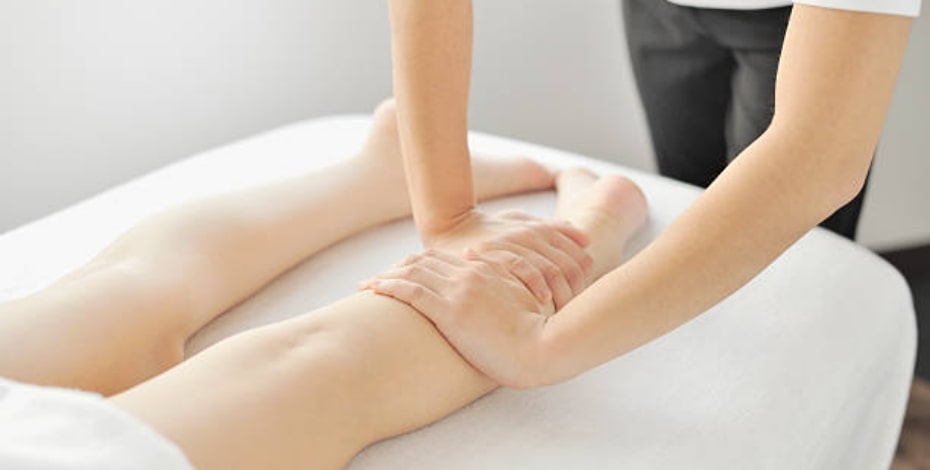
Manual lymph drainage for lymphoedema

Lymphoedema occurs in about 16 per cent of people after breast cancer. According to the recommendations of the International Society of Lymphology (ISL), lymphoedema needs to be treated with decongestive lymphatic therapy (DLT), which consists of skin care, manual lymph drainage (MLD), compression therapy and exercise therapy. However, the value of MLD as a component in this regimen is uncertain. A Cochrane systematic review with six randomised trials did not demonstrate any added value from MLD. Physiotherapist Tessa De Vrieze from Belgium describes how her trial sheds further light on this issue.
What type of patients were enrolled in your trial?
Only patients with chronic (at least three months) breast cancer-related unilateral hand and/or arm lymphoedema (ISL stages I up to IIb, with signs of pitting) were included in this trial.
What interventions did all participants receive and what were the randomised interventions?
All participants were treated with DLT consisting of skin care, compression therapy (multilayer bandaging followed by a compression sleeve and hand glove), exercises under compression and education regarding self-management.
The only treatment modality that differed among the three groups was the type of MLD added.
Patients were randomised to either a fluoroscopy-guided MLD group (in which the draining techniques were patient-specific and based on the findings of a fluoroscopic investigation), a traditional MLD group or a placebo MLD group.
All participants received 14 treatment sessions during the three-week intensive treatment period.
Each intensive treatment session lasted for 60 minutes: 30 minutes of standard treatment (skin care, bandaging and exercises) and 30 minutes of MLD.
Treatment started with drainage of the shoulder and trunk, followed by removal of the bandage and circumference measurements of the arm using a perimeter.
Afterwards, drainage of the arm (and hand), shoulder and trunk was continued.
After MLD, skin care and bandaging were applied and the session ended with exercises.

Tessa De Vrieze investigates the role of manual lymph drainage in lymphoedema treatment.
During the subsequent six-month maintenance period, participants received 18 sessions in decreasing frequency from two sessions per week initially down to one session per month during months five and six.
In the maintenance phase, therapeutic sessions lasted for 30 minutes because they only consisted of skin care and MLD.
Additionally, participants performed exercises at home and wore the compression sleeve and glove during the day.
What outcomes did you measure and over what period?
The primary outcomes of this trial were reduction in excess volume of the arm/hand and in accumulation of excess volume at the shoulder/trunk, with the end of the intensive phase as the primary end point.
Secondary outcomes included daily functioning, quality of life, erysipelas and treatment satisfaction.
All outcomes were measured at baseline; after the intensive phase; after one, three and six months of maintenance phase; and after six months of follow-up.
Were any worthwhile effects of the manual lymph drainage (either with or without the fluoroscopy guidance) identified in the study?
The findings of this trial support the conclusions of systematic reviews and meta-analyses that the added value of MLD (compared with placebo/no MLD) to the other modalities of DLT for the treatment of breast cancer-related lymphoedema is rather limited.
Moreover, traditional MLD and fluoroscopy-guided MLD as adjuncts to DLT were not superior to placebo MLD in reducing arm/hand volume or fluid accumulation at the level of the shoulder/trunk in patients with chronic breast cancer-related lymphoedema.
What could physiotherapists offer these patients if, as you recommend, they cease offering manual lymph drainage?
In patients with chronic breast cancer-related lymphoedema, MLD does not provide any clinically important additional benefits when added to other components of DLT.
However, it is crucial to still offer proper treatment and management of the oedema in these patients.
Therefore, during the treatment sessions, more time could be spent on other evidence-based treatment options such as compression therapy and exercise therapy, along with a great emphasis on evaluation, education and self-management.
>> Tessa De Vrieze is a Belgian postdoctoral researcher at the Research Foundation—Flanders (FWO), affiliated with KU Leuven and the University of Antwerp. She is a board member of the inter-university research group OEDEMA, a researcher with the international research group CarEdOn and an independent physiotherapist (oedema therapist) in an interdisciplinary practice in Antwerp, Belgium.
© Copyright 2024 by Australian Physiotherapy Association. All rights reserved.





